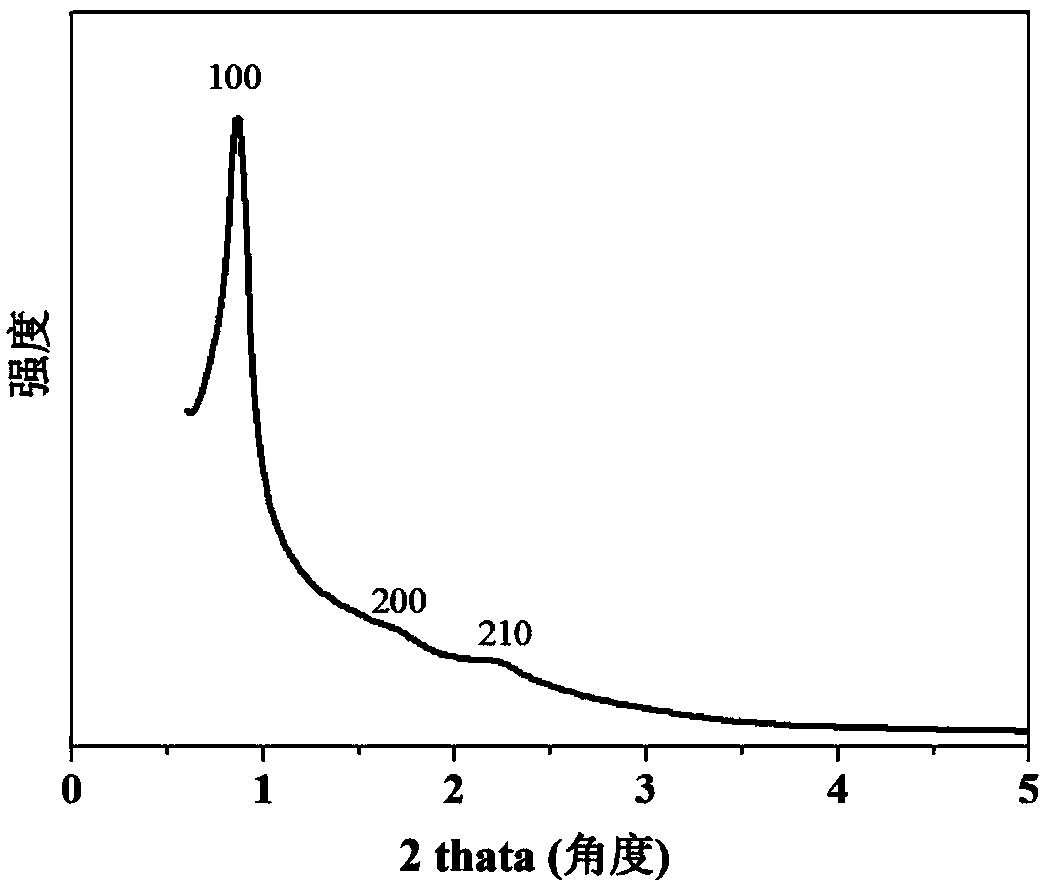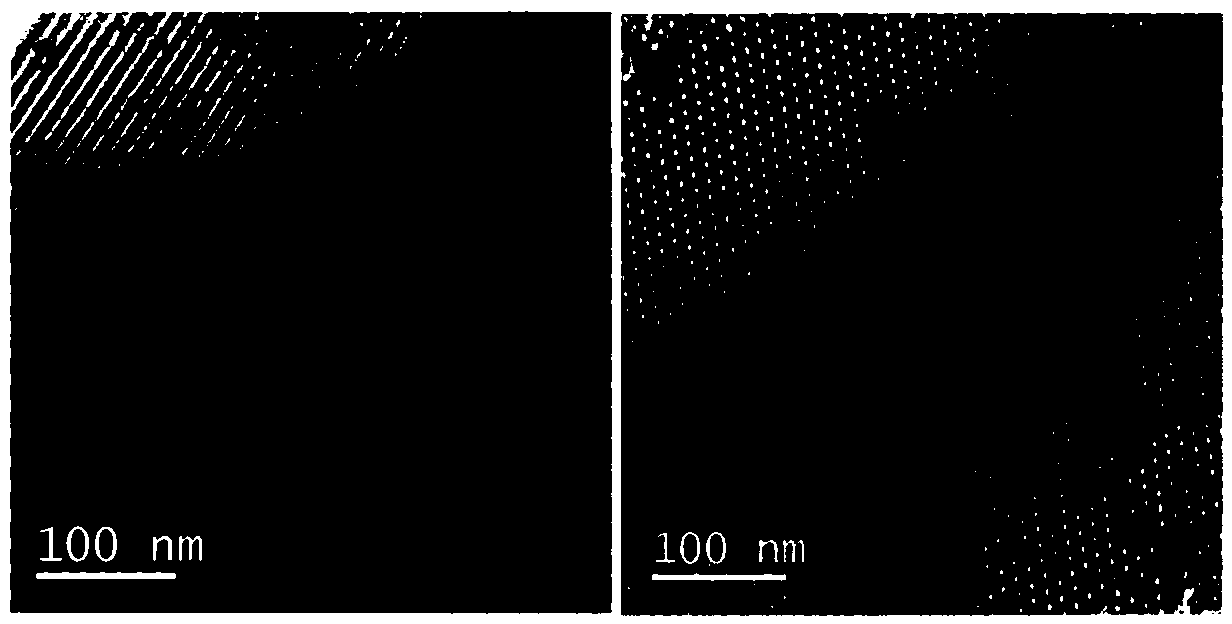Solid-phase synthetic method of highly ordered mesoporous carbon material
A highly ordered, solid-phase synthesis technology, applied in the field of materials, can solve problems such as low efficiency, time-consuming, labor-intensive, and complicated
- Summary
- Abstract
- Description
- Claims
- Application Information
AI Technical Summary
Problems solved by technology
Method used
Image
Examples
Embodiment 1
[0023] At room temperature, 0.62 g of triblock copolymer EO 106 PO 70 EO 106 Add to an agate mortar and grind to a fine powder. Then 0.62 g of resorcinol was added and ground for 5 minutes until powdered. Then 0.45 g of terephthalaldehyde was added in three batches, followed by careful grinding for 5 minutes and mixing as homogeneous as possible. The solid turned into a white to off-white pasty dough-like viscous solid during grinding, and the viscous solid from grinding was transferred to a corundum crucible. Put the newly prepared samples into ovens at 80°C and 100°C for heat treatment for 300 minutes respectively to obtain a hard bulk polymer composite material, remove it and grind it into powder, then place it in a tube furnace and protect it in an inert atmosphere calcination at 900°C for 360 minutes to obtain carbon mesoporous materials. This material has a pore diameter of 5.4nm and a pore volume of 0.55cm 3 / g, the specific surface area is 700m 2 / g, the pore sp...
Embodiment 2
[0025] At room temperature, add 0.81 g of cationic surfactant cetyltrimethylammonium bromide into an agate mortar and grind to fine powder; then add 0.42 g of resorcinol and grind for 5 minutes to powder. Then 0.49 g of terephthalaldehyde was added in three batches followed by careful grinding for 5 minutes and mixing as homogeneous as possible. During grinding, the solid turned into a white to off-white pasty dough-like sticky solid, which was transferred to a corundum crucible. Put the newly prepared samples into ovens at 80°C and 100°C for heat treatment for 300 minutes respectively to obtain a hard bulk polymer composite material, remove it and grind it into powder, then place it in a tube furnace and protect it in an inert atmosphere calcination at 900°C for 300 minutes to obtain carbon mesoporous materials. This material has a pore diameter of 5.4nm and a pore volume of 0.26cm 3 / g, the specific surface area is 420m 2 / g.
Embodiment 3
[0027] At room temperature, 1.5 grams of triblock copolymer Brij56 was added into an agate mortar and ground to a fine powder, then 1.50 grams of melamine was added and ground to make the mixture uniform. Then 0.54 g of resorcinol was added and ground for 5 minutes until powdered. Then 0.76 g of terephthalaldehyde was added in three batches, followed by careful grinding for 5 minutes, and the viscous solid obtained by grinding was transferred to a corundum crucible. The newly prepared samples were heat-treated in ovens at 80°C and 100°C for 300 minutes, respectively, to obtain bulk polymer composite materials. It was removed and ground into powder, then placed in a tube furnace, under the protection of an inert atmosphere, and fired at a high temperature of 600°C for 180 minutes, and finally a carbon mesoporous material was obtained. The material has a pore size of 3.3nm and a pore volume of 0.17cm 3 / g, the specific surface area is 310m 2 / g, the nitrogen content is 14.0wt...
PUM
| Property | Measurement | Unit |
|---|---|---|
| pore size | aaaaa | aaaaa |
| specific surface area | aaaaa | aaaaa |
| specific surface area | aaaaa | aaaaa |
Abstract
Description
Claims
Application Information
 Login to View More
Login to View More - Generate Ideas
- Intellectual Property
- Life Sciences
- Materials
- Tech Scout
- Unparalleled Data Quality
- Higher Quality Content
- 60% Fewer Hallucinations
Browse by: Latest US Patents, China's latest patents, Technical Efficacy Thesaurus, Application Domain, Technology Topic, Popular Technical Reports.
© 2025 PatSnap. All rights reserved.Legal|Privacy policy|Modern Slavery Act Transparency Statement|Sitemap|About US| Contact US: help@patsnap.com


